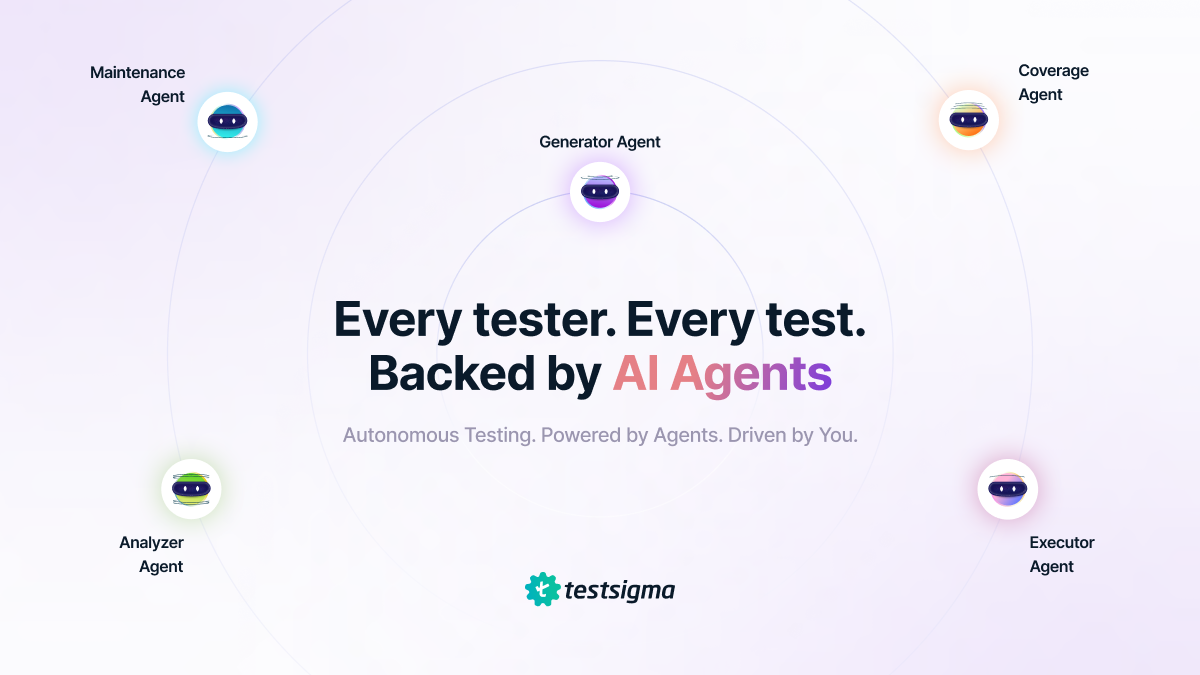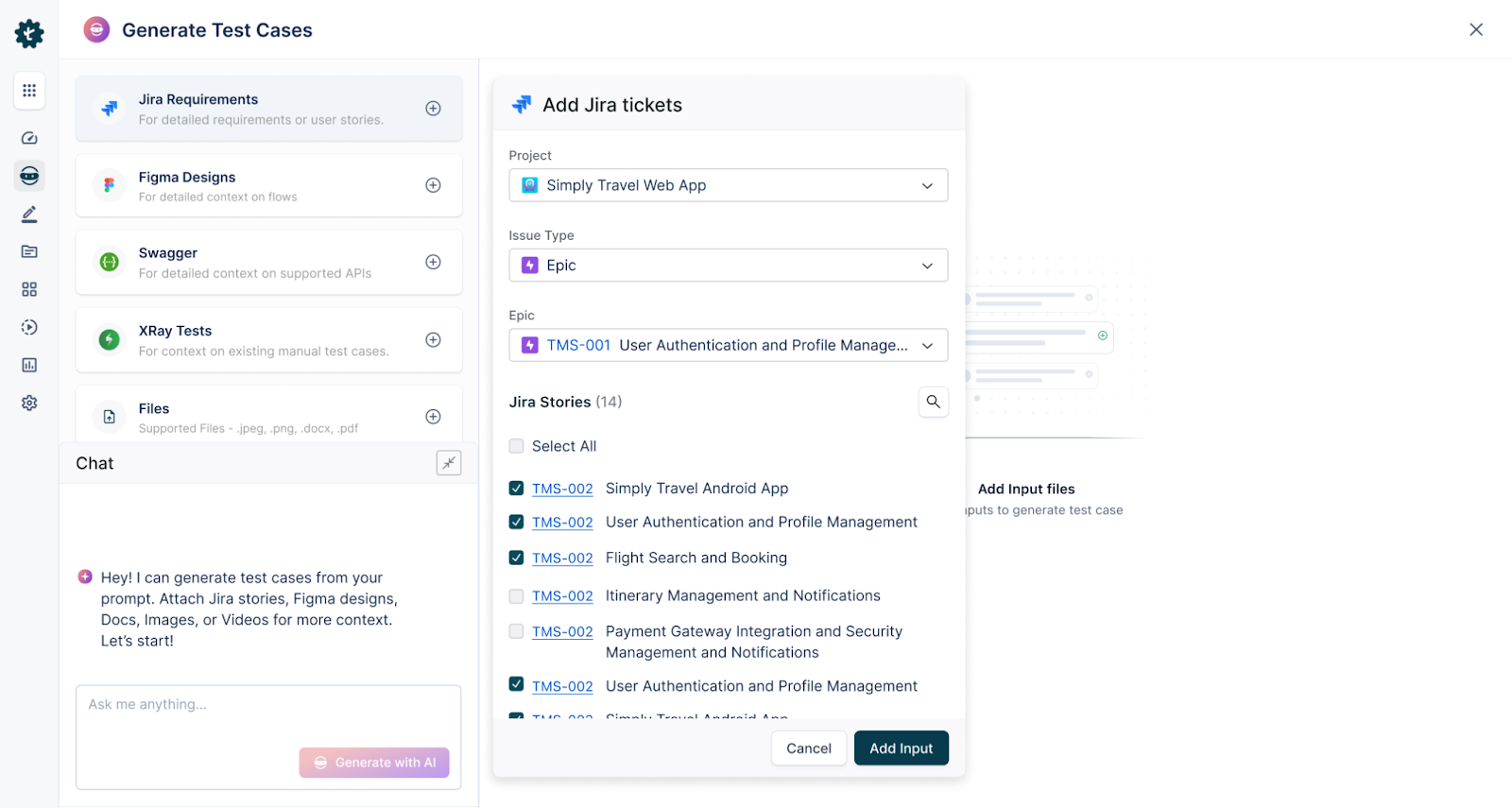For QA teams aiming to accelerate their testing processes and organizations looking to improve software quality without exhausting resources, finding a reliable alternative to traditional Selenium scripting is essential. Switching to a unified, codeless test automation platform offers better efficiency, faster ROI, and broader test coverage. In this blog, we’ll explore the ins and outs of codeless Selenium automation and examine smarter alternatives.
Table Of Contents
- 1 What is Codeless Selenium Automation?
- 2 Benefits of Codeless Selenium Automation Testing
- 3 How Does Codeless Selenium Automation Work?
- 4 Codeless Selenium vs. Scripted Selenium Automation: Key Differences
- 5 Challenges of Codeless Selenium Automation
- 6 Key Features to Look for in Codeless Selenium Tools
- 7 Codeless Selenium vs. Testsigma: A Detailed Comparison
- 8 Conclusion
What is Codeless Selenium Automation?
Codeless Selenium automation refers to the process of using Selenium to create and execute automated software tests without coding.
This process is carried out using visual testing tools like Selenium IDE, which allows users to record and playback user interactions with web applications. Some tools even offer minor modifications of the recorded steps. These tools automate tests through a graphical user interface rather than scripting used by traditional tools. Codeless automation with Selenium stands out because it makes automation accessible even to testers who may not have coding experience.
Benefits of Codeless Selenium Automation Testing
Codeless automation testing tools have the following advantages over traditional, scripted Selenium scripts:
- Ease of Use & Accessibility:
These tools eliminate the need for extensive coding for automation, making it accessible to a broader range of users. Also, certain features in the visual interface of these tools, such as the drag-and-drop features, visual workflows, and reusable components, simplify the overall testing process.
- Resource Optimization & Cost-Effectiveness
These tools reduce testing costs significantly since they do not rely on specialized coding resources. In addition, it allows testers to allocate more of their time for strategic tasks like business-relevant testing, test design, and analysis, rather than spending time on complex coding.
- Improved Collaboration & Team Work
The no-code approach allows more people, such as business analysts and sales managers, to participate in testing, allowing them to contribute with their deep business and product knowledge. The visual test scripts make understanding and communication between team members easier.
- Increased Productivity
Codeless platforms facilitate faster test creation, simplify test management, and increase test coverage rate. Many of these tools also seamlessly integrate with CI/CD pipelines, improving the speed and efficiency of the whole testing process.
How Does Codeless Selenium Automation Work?
In codeless Selenium automation, a visual interface is used to create and run test cases, instead of coding test cases. Here’s how this works:
1. Visual Test Recorder
Most codeless testing tools come with a test recorder. This recorder records your actions as you interact with your web application, such as clicking buttons, filling forms, or navigating pages.
Example: If you click a login button, the tool records that action and translates this action into Selenium commands.
2. Drag-and-drop Test Builder
You can also build test steps using a drag-and-drop interface or by selecting actions from a menu. Instead of writing code, you can choose actions like “Click”, “Input Text”, or “Verify Element” and assign them to specific web elements.
3. Element Identification Made Easy
To avoid manually finding or writing locators, codeless tools automatically capture the locators (like XPath, CSS selectors) for each element you interact with. Some tools even highlight the element on the screen as you record the test.
4. Test DATA Handling
You can create data-driven tests without coding. Just link your tests to data sources like spreadsheets or in-tool tables. The tool runs the same test with different data sets and helps test multiple scenarios easily.
5. Running the Tests
Once your test is ready, you can run it on different browsers or devices, either locally or in the cloud. Most tools support parallel execution. Once the execution is completed, you get detailed reports on what passed, failed, or broke.
6. AI & Smart Suggestions
Some modern codeless tools come with AI-powered features like:
- Auto-healing: If an element locator changes, the tool tries to find the new one without breaking the test.
- Smart suggestions: Recommend actions based on your previous steps.
Codeless Selenium Vs. Scripted Selenium Automation: Key Differences
The main difference between codeless Selenium and scripted Selenium automation is how tests are created and maintained by using them. Let’s look at it in more detail:
| Aspect | Scripted Selenium Automation | Codeless Selenium Automation |
| Coding Requirement | Requires programming knowledge (Java, Python, JavaScript, etc.) | No coding needed. Uses visual interfaces and record-playback tools |
| Ease of Use | More complex, suited for technical users | Simple and user-friendly, ideal for non-technical testers |
| Test Creation Speed | Slower due to manual coding | Faster with visual workflows and prebuilt actions |
| Flexibility & Customization | Highly flexible and customizable for complex logic and workflows | Limited in complex scenarios, but modern tools support some scripting or custom logic |
| Maintenance | More effort needed for script maintenance and debugging | Easier to maintain with visual steps and auto-healing features in modern tools |
| Test Reusability | High: functions and modules can be reused across tests | Moderate: depends on tool capabilities |
| Integration Capabilities | Easily integrates with CI/CD, test management, and version control tools | Many tools offer built-in integrations, but may be limited compared to custom code |
| Learning Curve | Steep: testers need to understand both coding and the Selenium framework | Low: easier for manual testers or beginners to adopt |
| Scalability | Highly scalable for large, complex projects | Good for quick scaling in simple or mid-sized projects |
| Best Suited For | Complex, large-scale enterprise applications with custom needs | Smaller projects, agile teams, or rapid testing with limited coding expertise |
Challenges of Codeless Selenium Automation
- Dependency on Locators
Test scripts in codeless tools are created using recording features and depend on locators. Any change to the application’s UI affects these locators, causing the tests to break. This necessitates frequent re-recording and maintenance of tests.
- Limitations in Handling Dynamic Elements
Some web elements have changing properties or loading asynchronicity, and a codeless tool might not be intuitive enough to handle these elements.
- Minimal Cross-Browser & Mobile Support
While Selenium supports multiple browsers, codeless tools have limited cross-browser testing features. They may not fully support testing on different operating systems and devices.
- Less Flexible for Complex Scripting & Error Handling
Codeless tools are limited in their capability to handle complex scenarios that involve business logic, pop-ups, alerts, and captchas, and require manual intervention at these points. This limitation also exists for error handling, making debugging and root-cause analysis more difficult.
Key Features to Look for in Codeless Selenium Tools
The table below covers some of the significant areas in testing and the specific features you should look for in a codeless Selenium automation tool.
| Area | Key Features |
| Ease of Use | Visual interface with drag-and-drop builder Record and playback test creation Flowchart-style test visualization Intuitive and simple navigation |
| Test Maintenance | Self-healing tests that adapt to UI changes Smart element locators to auto-detect web elements |
| Execution Features | Reusable test steps and components Cross-browser test execution Support for parallel test execution |
| Integration | CI/CD pipeline integration (e.g., Jenkins, GitHub Actions) Integration with test management tools (e.g., JIRA) |
| Collaboration | Easy test sharing with team members Real-time collaboration and editing Role-based user access control |
| Reporting | Detailed execution reports and logs Visual dashboards with charts and graphs Trend analysis and test health indicators |
| Advanced Features | Ability to insert custom code for complex scenarios Support for data-driven testing with external data sources |
Codeless Selenium Vs. Testsigma: A Detailed Comparison

Testsigma is a cloud-based codeless test automation platform with powerful Agentic AI capabilities, built to assist testers in end-to-end test automation. We saw the limitations of codeless Selenium automation tools and also what features should be on your checklist while choosing a codeless alternative for your traditional Selenium automation. Testsigma is a must-check for modern QA teams looking to reduce their testing time without affecting accuracy and efficiency. Let’s see what makes Testsigma stand out from the other codeless automation platforms.
Testsigma’s Unique Strengths:
- Agentic AI Capabilities
Testsigma features an intelligent AI coworker named Atto that assists testers throughout the entire testing lifecycle, helping them easily navigate bottlenecks. There is also a suite of specialized AI agents: Generator, Optimizer, Data Generator, Coverage Planner, Test Planner, Analyzer, Maintenance Agent, and Bug Reporter. Each agent is responsible for a specific stage of testing, from test creation to execution and maintenance, minimizing the need for manual effort.
- Cross-Browser and Cross-Device Support
Many codeless automation tools struggle with testing across multiple browsers and devices. Testsigma overcomes this by offering access to 3,000+ real devices in the cloud, allowing you to run tests across a wide range of browsers, operating systems, and device combinations, without the hassle of maintaining an in-house device lab.
- Test Creation
Creating complex test scenarios can be a challenge with most codeless tools. Testsigma simplifies this by allowing testers to generate test cases using natural language prompts as well as directly from Jira stories, Figma designs, and images. This provides additional context to the AI, helping it generate accurate and comprehensive test cases, even for edge scenarios, ensuring maximum coverage.

- Integrations
With 30+ native integrations, Testsigma seamlessly connects with popular bug tracking, test management, and communication tools (e.g., Jira, Slack). This ensures you can integrate testing into your existing workflows without changing your tech stack.
- Scope of Testing
No need to switch between multiple tools for different testing types. With Testsigma, you can test web, mobile, API, Salesforce, and ERP systems like SAP, all from a single unified platform.
- Test Maintenance
Testsigma’s Maintenance Agent uses AI-powered self-healing capabilities to detect UI changes, identify affected locators, and automatically update test scripts. This reduces manual intervention and ensures your tests remain stable and reliable over time.
- Reporting
Testsigma offers intuitive reports, real-time analytics, and collaboration features that help teams track progress, identify failed or passed tests, report bugs, and assign tasks from one place.
Meet Testsigma!
Conclusion
Codeless Selenium automation is transforming how teams approach software testing, making it faster, more accessible, and less dependent on coding expertise. Understanding how these tools work, their key features, and their differences from traditional Selenium scripting helps teams make informed decisions. As the demand for faster, scalable testing grows, exploring codeless automation tools is no longer optional but a strategic move toward more efficient and inclusive testing.


